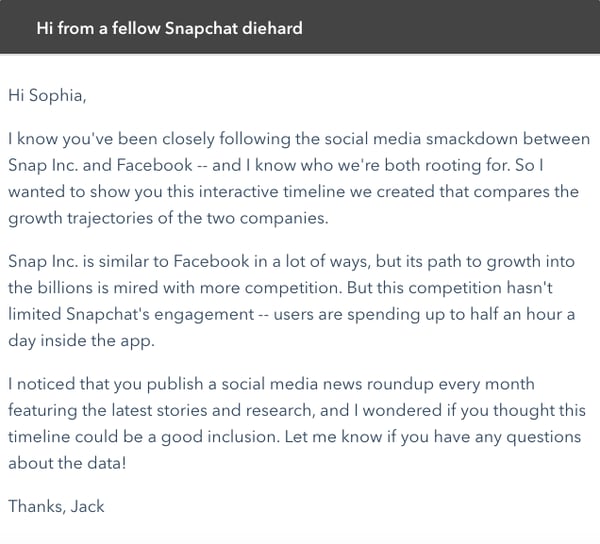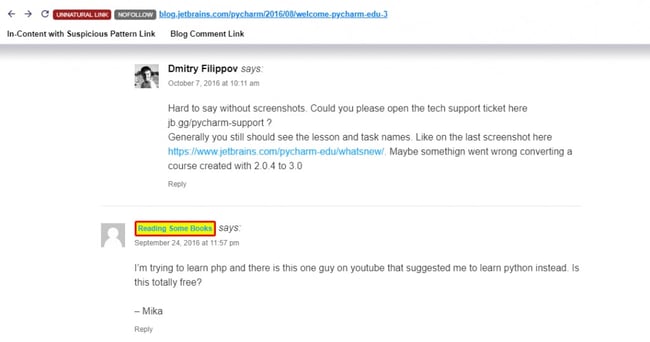Gaining inbound links from other websites is one of the best ways to improve your website’s rankings on search engines. However, link building can require a significant investment of time and resources and it may be tempting to take shortcuts.
However, following bad link building practices could land you in Google “jail” and cost you traffic and sales. Most times, you might even have to bear the extra cost of hiring professionals to help you recover your website.
In this post, we’ll cover what bad link building practices are and what to do instead.
1. Buying Links
Several sites and services help you buy text links on other sites that pass SEO credit. However, there is also a black market in link buying that is much less formal, more secretive, and less organized. We wouldn’t recommend either one.
This is probably the most tempting bad link building strategy because you get to control what sites you are getting links from and analyze these sites to ensure you’re not placing links in bad neighborhoods. You can also place links within relevant content and use anchor text for the keywords you are trying to rank for.
But — and it’s a big but —Google explicitly states that exchanging money for links to manipulate PageRank may be considered part of a link scheme and a violation of Google’s Webmaster Guidelines.
So maybe you’ll get away with it, maybe you won’t. Either way, we don’t advocate buying links.
What to do Instead
Buying links is not only a black hat SEO practice — it’s an expensive one. Instead of spending thousands of dollars on links that could bring you trouble, you could invest the money by hiring a writer to help you create quality content or getting more traffic to existing content through paid ads.
2. Targeting Domain Authority Over Website Relevance
Although Domain Authority (DA) gives a good idea about how likely a website will appear on the search engine result page (SERP), it shouldn’t be your number-one factor to consider when looking for backlinks.
If you focus on DA, you’d only be getting backlinks from a limited number of websites, and this could cause you to have an unnatural link profile.
What to do Instead
Build links with as many relevant websites as possible, irrespective of their domain authority.
You can think of these links as the connections or relationships we build in real life. Some of these connections grow stronger with time. We might outgrow some. We might need some for only a particular chapter of our lives, and so on. The same can be said of inbound links.
Also, a backlink is relevant when it’s from a site that covers subjects similar to yours, not because of its domain authority.
3. Not Personalizing Your Outreach Email
Gone are the days when you could hit up editorial teams with the “I was reading your piece on xxx and loved it so much. We just created an article that talks about xxx. It would be a valuable resource for your audience. Can you link to it?” request, and expect them to reply.
Not only are these templates old-fashioned, but they also show a lack of effort on your part.
Website managers see these types of emails in their inboxes every day and are more than willing to send them all into the junk folder.
What to do Instead
Personalize your outreach emails so that each one of them is unique. It might take you more time to do this, but it’s usually more rewarding.
Using the recipient’s name in the email isn’t the only way to personalize your outreach email. For example, you could mention something you read in the news about the company you’re pitching, or show how you can be of unique value to their business.
4. Not Creating Link-Worthy Content
The simple truth is that if there are no valuable blog posts or pieces of content on your website, it will be hard to get backlinks. This is often the case for websites that prioritize quantity over quality.
What to do Instead
Instead of creating a ton of articles that nobody wants to read, you should focus on creating fewer pieces that are carefully aligned with your business and supported by keyword research.
When creating new pieces of content, you should also think about how to make them different from articles that already rank for your target keywords. A great way is to conduct original research and studies to uncover new stats and findings that your audience would find helpful.
5. Borrowing Links
Most websites today no longer allow people to comment on their posts. Why? Because many people leave a link to their website in the body of their comment.
This practice is known as link borrowing. These link borrowers often resort to inserting their keywords where their name is supposed to go. And many people automate or just cut and paste such comments all over the web.
If you allow comments on your website, it’s essential to have a spam filter that catches these comments.
Link borrowing might get you a short-term burst in rankings. But these are not high-quality links and won’t provide long term advantage.
What to do Instead
You could volunteer to become a case study and get a backlink once the study is published. Another option is to create an updated version of an existing guide or report.
6. Using the Wrong Tools
No one sets out on a mission to fell a tree with a pack of razors — well, unless they want to waste their time and effort. The same can be said of your link building efforts. It’s possible to do everything manually, but you’d be wasting a ton of resources.
What to do Instead
You need the right tools to make your link building efforts worthwhile. While some of these tools might be expensive, they’re usually worth it in the end. For starters, you’d need to invest in project management, SEO, and blogger outreach tools.
7. Having Only One Link Building Strategy
Although you might be experiencing a bit of success with a particular method of link building, it’s never the best choice to put all your eggs in one basket. The online world changes every time, and a single link building method can quickly become less effective.
What to do Instead
If you have the resources, it’s better to look for alternative link building strategies that can work for your business. For example, have you been having success with guest blogging? Then, you can complement that strategy by becoming a source for journalists looking for experts to feature in their articles.
8. Begging for Links
Beggars send emails to people they don’t know asking for links.
I recently received a really creative email. The person introduced himself as a big fan of my writing and suggested that “based on reading what I write,” I should check out this new social networking site. First, he wrote about how awesome the site was (without any explanation why). Then, he suggested that I write about it because everyone else who did it received floods of traffic. Finally, he got very offended when I responded that I wasn’t interested and that he should be more upfront about his link begging intentions.
Of course, begging comes in many forms. Not all are as creative as this guy. Most people just send emails to web admin asking them to link to them. While begging is one way to build links, it is ineffective and the fastest way to annoy a web admin.
What to do Instead
Instead of begging for links, create content your target audience would find valuable and share without being asked. And if you ever need to email web admins to ask for a link, ensure your email is personalized and your article is better than the one they already link to.
9. Link Bartering or Trading
I’ll link to you if you link to me. I’ll buy your services if you buy mine. I’ll show you mine if you show me yours.
How much easier do you think you can make it for Google to detect that you didn’t earn that link? Google’s power is that it detects patterns. This is a pretty easy pattern to catch: “Site B links to Site A. Site A links to Site B.”
Of course, bartering or trading links gets more creative by saying, “I’ll link to you if you link to him, and I’ll link to this other guy if he links to you, etc.” There are even networks you can join to facilitate this process.
Participating in these link building rings is even riskier than regular bartering. It’s believed that Google labels websites into “neighborhoods,” and there are bad neighborhoods that you don’t want to live in. By interlinking with websites in a bad neighborhood, Google will think you, too, are bad.
What to do Instead
Build meaningful relationships with other web admins in your niche. First, get on their radar by linking out to helpful content and resources that they create. Then, as time passes, they’ll likely return the favor by linking to your website too.
10. Poor Internal Linking
You can’t expect people to link to your content when you don’t link to it yourself. Not only does poor internal linking make it hard to get backlinks, but it also makes it difficult for search engines to rate your web pages.
Poor internal linking also doesn’t let you get the most of your backlinks’ “link juice” across to other relevant web pages on your website.
What to do Instead
Create a proper internal linking strategy. Start by sketching your website to identify your major pages and topics. Next, look at the most common topics you write about and find how to connect them to your website’s major pages. Finally, think of any other page that could link to your ranking page.
11. Bribing
Many companies try to bribe web admins and bloggers for links. Basically, companies offer to send them stuff if they link to the company. Although harder for Google to detect, this isn’t a great practice. In fact, the FTC frowns upon this.
What to do Instead
Do everything else but bribe web admins or bloggers. Instead, you could build a free tool, become a source to journalists, create new content, and so on.
12. Disregarding Broken Links
Broken links reduce a website’s value. The 404 message can also cause visitors who are excited to read an article to become easily frustrated. Unfortunately, many website owners don’t pay as much attention to broken links on their websites.
Paying attention to broken links, especially on your competitor’s website, can help your link building efforts.
What to do Instead
Reach out to websites with broken outbound links and ask them to replace them with a link from your website. Your content would add value to the webmaster’s website and help fix the broken link error.
Say Goodbye to Bad Link Building Practices
There’s no point in trying to build links if you’re not going to do it the right way. So, if you’ve been engaging in any of the bad link building practices mentioned above, it’s time to stop. Instead, test the alternative strategies and see what tactic works best for you.
Editor's note: This post was originally published in July 2009 and has been updated for comprehensiveness.
12 Bad Link Building Practices & What to Do Instead was originally posted by Local Sign Company Irvine, Ca. https://goo.gl/4NmUQV https://goo.gl/bQ1zHR http://www.pearltrees.com/anaheimsigns
![→ Download Now: SEO Starter Pack [Free Kit]](https://no-cache.hubspot.com/cta/default/53/1d7211ac-7b1b-4405-b940-54b8acedb26e.png)



No comments:
Post a Comment